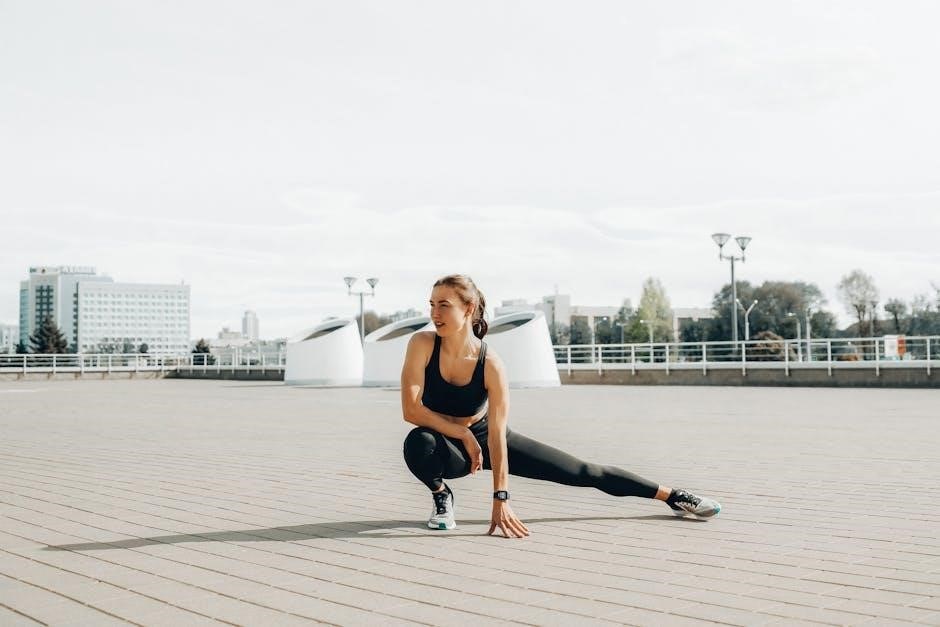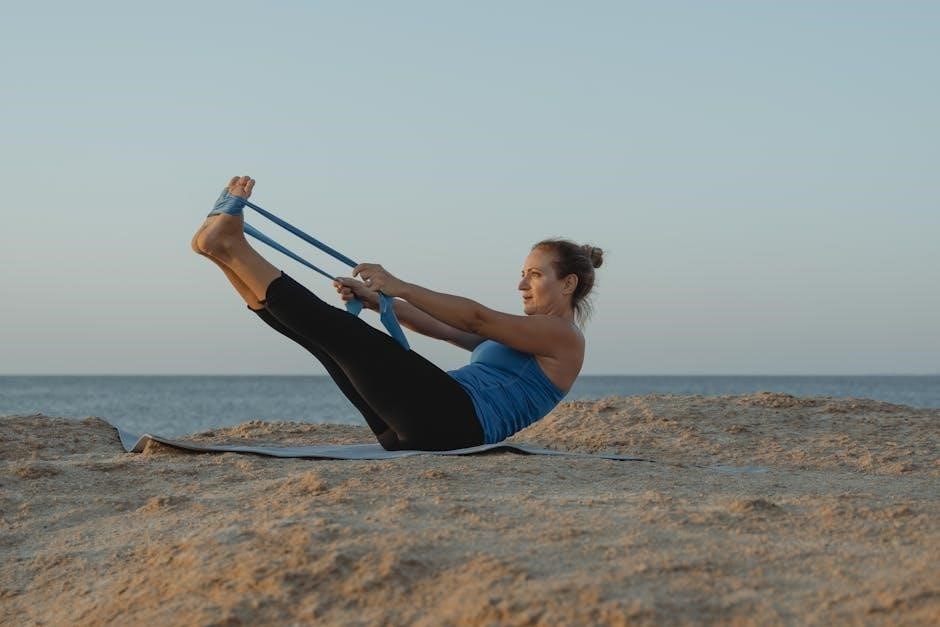De Quervains tenosynovitis affects the tendon sheath at the thumb side of the wrist, causing pain and swelling, with exercises and rehabilitation playing a crucial role in treatment and management always effectively․
Definition of De Quervains Tenosynovitis
De Quervains tenosynovitis is a condition that affects the tendon sheath, which is the outer layer of the tendon, located at the thumb side of the wrist․ This condition is characterized by the thickening and swelling of the tendon sheath, which reduces the ability of the tendon to move smoothly․ The tendon sheath is a protective layer that surrounds the tendon, and when it becomes inflamed, it can cause pain and stiffness in the wrist and thumb․ De Quervains tenosynovitis is often caused by repetitive movements or activities that involve the wrist and thumb, such as typing, gardening, or playing musical instruments․ The condition can also be caused by direct blows to the wrist or thumb, or by certain medical conditions, such as rheumatoid arthritis․ A proper definition of De Quervains tenosynovitis is essential for understanding the condition and developing effective treatment plans, including exercises and rehabilitation programs․ Accurate diagnosis and definition of the condition are critical for providing appropriate care and management․

Causes and Symptoms of De Quervains Tenosynovitis
Repetitive movements and activities cause pain and swelling on the thumb side of the wrist always effectively․
Understanding the Condition
To understand De Quervains tenosynovitis, it is essential to know that it affects the tendons on the thumb side of the wrist, causing pain and swelling․ The condition is characterized by inflammation of the tendon sheath, which surrounds the tendons, and can be caused by repetitive movements or activities․ The tendons affected are the abductor pollicis longus and extensor pollicis brevis, which control thumb movement․ Understanding the condition is crucial for effective treatment and management, and a healthcare professional can provide a proper diagnosis and recommend appropriate exercises and rehabilitation․ The goal of treatment is to reduce pain and inflammation, and improve wrist and thumb function․ By understanding the condition, individuals can take steps to prevent further injury and promote healing․ This knowledge can also help individuals to identify the symptoms and seek medical attention if necessary, and to follow a rehabilitation program to regain full range of motion and strength in the wrist and thumb․

Exercises for De Quervains Tenosynovitis
Exercises help to improve wrist mobs and strengths with gentle stretches always effectively․
Types of Exercises
There are various types of exercises that can help to alleviate the symptoms of De Quervains tenosynovitis, including wrist stretches, thumb stretches, and forearm exercises․ These exercises can help to improve flexibility and strength in the wrist and thumb, reducing pain and discomfort․
Some common types of exercises include opposition stretches, wrist radial deviation strengthening, grip strengthening, wrist flexion, and wrist extension․
These exercises can be modified to suit individual needs and can be performed at home or in a clinical setting․ It is essential to start slowly and gradually increase the intensity and duration of the exercises to avoid exacerbating the condition․
Additionally, exercises such as finger springs and thumb abduction can also be beneficial in improving range of motion and reducing stiffness․
Overall, a combination of these exercises can help to manage the symptoms of De Quervains tenosynovitis and improve overall wrist and thumb function․

Rehabilitation Exercises for De Quervains Tenosynovitis
Rehabilitation exercises help manage symptoms and improve wrist function with gentle movements always․
Importance of Rehabilitation
Rehabilitation plays a crucial role in managing De Quervains tenosynovitis, as it helps to reduce pain and inflammation, improve wrist function, and prevent further injury․ A well-structured rehabilitation program can help individuals return to their normal activities and improve their overall quality of life․ The importance of rehabilitation lies in its ability to promote healing, strengthen the affected tendons, and improve range of motion․ By incorporating exercises and stretches into their daily routine, individuals can reduce their reliance on pain medication and avoid surgical intervention․ Additionally, rehabilitation can help to prevent future episodes of De Quervains tenosynovitis by improving wrist mechanics and reducing the risk of repetitive strain injuries․ Overall, rehabilitation is an essential component of De Quervains tenosynovitis treatment, and its importance cannot be overstated․ With a commitment to rehabilitation, individuals can effectively manage their symptoms and achieve long-term relief from this debilitating condition․ Regular exercise and stretching can help to maintain wrist health․

Precautions and Considerations
Individuals should consult healthcare providers before starting exercises to ensure safety and effectiveness always and follow guidelines carefully․
Safe Exercise Practices
To ensure safe exercise practices, individuals with de Quervain’s tenosynovitis should start with gentle exercises and gradually increase intensity and duration․ It is essential to listen to the body and stop exercising if pain or discomfort occurs․ A healthcare provider or physical therapist can provide guidance on proper exercise techniques and help develop a personalized exercise plan․
Additionally, individuals should warm up before exercising and cool down afterwards to prevent injury․ It is also crucial to maintain good posture and use proper body mechanics when performing exercises․ By following these safe exercise practices, individuals with de Quervain’s tenosynovitis can reduce the risk of injury and promote effective healing and rehabilitation․
Regular exercise can help improve range of motion, strength, and function, allowing individuals to return to their normal activities․ With patience, consistency, and proper guidance, individuals with de Quervain’s tenosynovitis can achieve optimal recovery and prevent future episodes․
